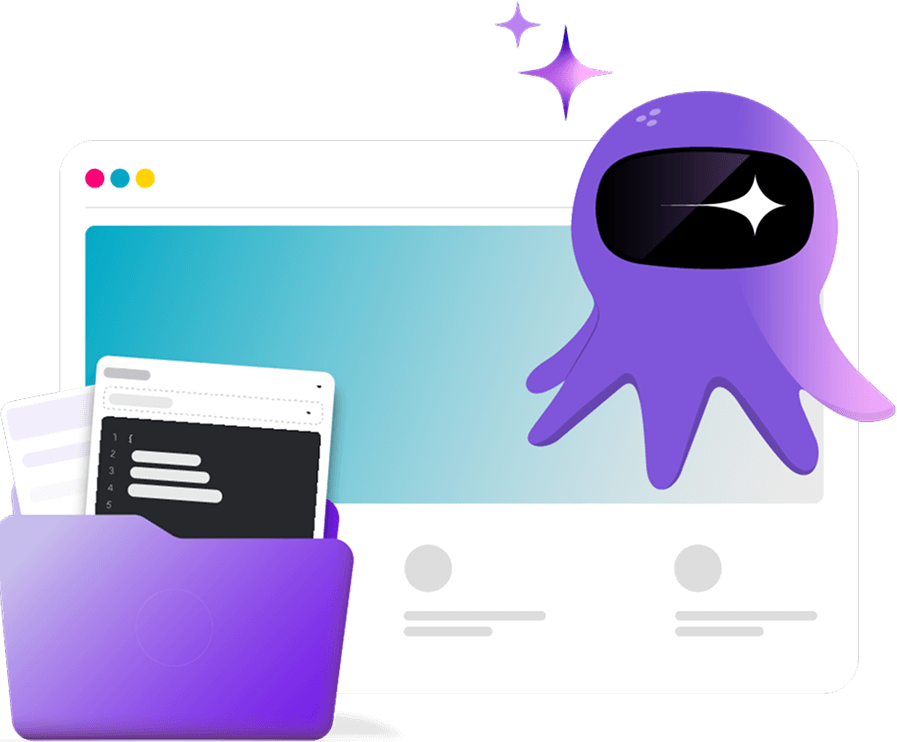Hiring top-tier talent is more important and more difficult than ever before. In a market saturated with applicants, the ability to effectively identify and hire the right talent directly impacts company performance. That’s why having a clear and efficient candidate shortlisting process is essential.
Table of Contents
In this guide, we’ll break down everything about shortlisting candidates from the basic steps to smart, AI-powered strategies that make hiring faster and more effective.
Want to improve your hiring quality instantly? Try AI-powered shortlisting with Xobin.
Book A DemoTL;DR – Key Takeaway!
- Candidate shortlisting is the process of identifying top applicants who meet the essential and desirable role criteria.
- Start by defining clear shortlisting criteria, using a shortlisting matrix template to ensure structured, fair, and objective evaluation.
- Combine resume shortlisting, skill test shortlisting, and pre-screening steps like phone and video interviews for deeper insights.
- AI is transforming candidate screening, enabling blind shortlisting, bias avoidance, predictive analytics, and faster ATS automation.
- Use applicant tracking systems and software like Xobin to automate resume parsing, communication, scheduling, and scorecard scoring system tracking.
- Avoid common mistakes like inconsistent criteria, poor candidate experience, and neglecting DEIB in shortlisting.
- Measure effectiveness using metrics like time-to-hire, interview conversion rate, applicant-to-interview rate, and quality of hire.
- Xobin helps streamline the shortlisting steps with AI-powered talent assessments, video interviews, rejection communication, and HR collaboration dashboards.
What is candidate shortlisting?
Candidate shortlisting is the process of narrowing down a pool of applicants to those best suited for the following stages of the recruitment funnel. It involves evaluating resumes, assessing qualifications, and identifying candidates who meet the essential vs. desirable criteria for the role.
This step plays a key role as it connects candidate screening to the interview stage. It also helps shape the tone for the whole recruitment shortlisting process. A well-designed shortlisting matrix template ensures a fair and clear evaluation, which reduces bias while boosting diversity and staying legally compliant.
Did You Know?
Using a clear shortlisting process can cut time-to-hire by up to 40%, helping you hire faster and find better candidates.
How Can You Effectively Start Shortlisting Candidates?
To start the recruitment shortlisting process effectively, follow a clear and structured plan. Below are some key steps to begin:
1. Define Clear Shortlisting Criteria
Before you even post a job, clarify your shortlisting criteria based on essential and desirable qualifications. These should include skills, experience, education, and other factors directly impacting the job role. Categorizing these into essential and desirable criteria ensures you focus on must-haves versus nice-to-haves.
2. Use a Shortlisting Matrix Template
A shortlisting matrix template is a powerful tool for systematic evaluation. It allows recruiters to score candidates on each criterion and maintain fair and objective evaluation throughout. This also reduces unconscious bias by standardizing the assessment.

3. Start with Resume Shortlisting
Begin by screening resumes against your criteria for shortlisting candidates. Focus on relevant experience, educational background, and career growth. Often, companies use an Applicant Tracking System (ATS) to automate this process. As a result, it speeds up resume screening and removes candidates who don’t meet the basic requirements.
4. Incorporate Initial Screening
Follow up with phone screenings or short video interviews to assess communication skills, motivation, and cultural fit. This early contact refines your list further before investing in time-intensive in-person interviews.
5. Use Pre-Screening Questions
Initial filters like pre-employment skill assessments, certifications, or eligibility criteria can eliminate unqualified applicants early on. This reduces resume shortlist volume.
Xobin’s ATS lets you configure pre-screening filters and auto-disqualify irrelevant applications. Try it in your next job opening!
Book A Demo6. Apply Technology and Automation
Leverage AI-driven tools to help reduce manual work and improve screening and shortlisting candidates. Automation accelerates the shortlisting steps and provides data-driven insights.
What Criteria Should You Use to Shortlist the Best Candidates?
Clear shortlisting criteria lay the foundation for choosing the right candidates. That’s why top companies focus on the following key factors:
Essential Criteria
- Technical skills and certifications: Does the candidate have the required qualifications?
- Relevant work experience: How closely does experience match the role?
- Education: Is the candidate’s educational background suitable?
- Soft skills: Communication, leadership, and teamwork abilities.
- Cultural fit: Alignment with company values and culture.
Desirable Criteria
- Additional skills or languages.
- Experience in similar industries.
- Extra certifications or training.
Diversity, Equity, Inclusion, and Belonging (DEIB)
Modern recruitment prioritizes DEIB in shortlisting. This means actively using bias avoidance techniques, such as blind shortlisting, where personally identifiable information is removed to promote fair hiring.
Did You Know?
Blind shortlisting increases the likelihood of hiring diverse candidates by up to 25% and improves compliance with fair hiring laws.
Scoring Tools
Using candidate scorecards and shortlisting scorecards ensures a clear and consistent way to score candidates. This approach turns personal opinions into measurable data and promotes fair, unbiased evaluations.
How Is AI Changing the Way Recruiters Shortlist Candidates?
Artificial intelligence is revolutionizing the candidate shortlisting in the recruitment process by making it faster, more accurate, and less biased.
Automated Resume Parsing and Scoring
AI tools can analyze thousands of resumes within minutes, identifying keywords, skills, and experience matching your shortlisting criteria. This replaces manual resume shortlisting and reduces human error.

Skill-Based Filtering
Platforms like Xobin offer talent assessments that test applicants on job-specific skills, allowing data-driven decisions during candidate shortlisting.
Behavioral Analysis
AI tools analyze how applicants behave and speak during video interviews to understand their personality and attitude.
Predictive Analytics
AI systems use historical hiring data and hiring metrics to predict candidate success, allowing recruiters to focus on high-potential applicants.
Blind Shortlisting
AI can automatically redact identifiable information to promote unbiased decision-making, enhancing bias avoidance and supporting diversity & legal compliance.
Enhanced Candidate Experience
AI-powered applicant notifications and interview invitations improve communication, keeping candidates informed and engaged throughout the hiring process.
Did You Know?
Xobin uses AI to eliminate repetitive tasks during shortlisting, helping you make faster and smarter hiring decisions.
What Are the Steps to Automate Candidate Shortlisting?
Automation of the candidate shortlisting streamlines the process and ensures consistency. Here’s a clear roadmap of the shortlisting steps to improve efficiency:
Step 1: Implement an Applicant Tracking System (ATS)
Choose an Applicant Tracking System (ATS) that supports resume parsing, screening, and shortlisting candidates and integrates AI-driven analytics.
Step 2: Set Up Clear HR Criteria in the ATS
Define your shortlisting criteria inside the system to automate initial screening. These might include keywords, required experience, qualifications, and skill test results.
Step 3: Use AI for Skill Test Shortlisting
Automatically send skill tests after application submission. Xobin offers 3,400+ skill-based tests and 2,500+ job role-based tests across roles to objectively evaluate candidates’ technical abilities before progressing them.
Automate candidate shortlisting with Xobin’s pre-built skill tests and AI-backed scoring.
Book A DemoStep 4: Automate Communication and Scheduling
Use the ATS to send interview invitations, manage scheduling, and send non-acceptance emails. This keeps the candidate experience smooth and professional.
Step 5: Utilize Shortlisting Scorecard and Analytics
Track hiring metrics like time-to-hire, interview conversion rate, and applicant-to-interview rate through a scorecard scoring system to continuously improve your process.
Step 6: Collaborate with HR Teams Seamlessly
Ensure your ATS supports HR collaboration so hiring managers and recruiters can review candidate scores, notes, and feedback collectively.
What Common Mistakes Should You Avoid When Shortlisting Candidates?
Mistakes during the process of shortlisting candidates can have long-term repercussions. Here’s what to avoid:
1. Vague or Inconsistent Criteria
Without clear criteria for shortlisting candidates, bias and subjectivity creep in. Always standardize your evaluation.
2. Overlooking Candidate Experience
Neglecting timely applicant notifications or failing to communicate rejections via rejection communication damages employer branding.

3. Ignoring Diversity and Compliance
Skipping DEIB in shortlisting or legal compliance invites lawsuits and damages your reputation.
4. Excessive Reliance on Manual Screening
Manual resume shortlisting is time-consuming and prone to errors. On the other hand, automated resume screening improves accuracy and speed.
5. Shortlisting Too Many or Too Few Candidates
A poorly managed shortlist length either overwhelms your team or limits your options. Balance is key.
6. Lack of Data-Driven Evaluation
Ignoring hiring metrics like interview conversion rate or scorecard scoring system insights results in ineffective hiring.
How Do You Measure the Effectiveness of Candidate Shortlisting?
Measuring the success of your candidate shortlisting strategy is essential for continuous improvement.
Key Metrics to Track
- Time-to-hire: How quickly are you filling vacancies?
- Applicant-to-interview rate: Percentage of applicants who reach the interview stage.
- Interview conversion rate: Percentage of interviews leading to offers.
- Quality of hire: Performance and retention of hired candidates.
- Candidate experience feedback: Surveys or reviews from candidates.
- Diversity statistics: Representation across demographics.
Did You Know?
Tracking interview conversion rate helps companies identify bottlenecks in the recruitment funnel and refine shortlisting accuracy.
Use Data Analytics Tools
Leverage ATS and AI analytics to gain real-time insights into your hiring data. This helps hiring managers improve shortlisting steps and boost overall results.
How Xobin Can Help Streamline Candidate Shortlisting
Xobin’s AI-powered ATS that is Tracks, is designed to optimize every stage of the shortlisting process with intelligent automation and data-driven insights.
- Skill Testing: Choose from thousands of job-specific assessments.
- ATS Automation: Integrates with job boards and manages applicants from start to finish.
- Video Interviews: One-way and live interviews with AI-based evaluation.
- Candidate Scorecard: AI-driven scoring for fair and unbiased shortlisting.
- Rejection Communication: Automate non-acceptance emails and updates.
- Interview Shortlisting: Easy scheduling and coordination with built-in calendars.
- Bias Avoidance: Anonymized applications and DEIB-focused assessments.
- Hiring Metrics Dashboard: Track everything from shortlist length to final hires.
If you’re looking to reduce time-to-hire, improve interview conversion rate, and offer a superior candidate experience, it’s time to explore Xobin’s AI-powered candidate shortlisting solution. Book a personalized demo today and start shortlisting smarter, faster, and better.
Take the first step toward more innovative hiring today by optimizing your candidate shortlisting strategy.
FAQs
1. What is the first step in the candidate shortlisting process?
The first step in candidate shortlisting is defining clear shortlisting criteria based on the job’s essential and desirable qualifications. This includes technical skills, experience, certifications, and cultural fit, ensuring a structured and fair and objective evaluation.
2. How does AI help in shortlisting candidates?
AI shortlists resumes automatically, scores candidates using clear shortlisting scorecards, and helps avoid bias through blind shortlisting. It speeds up hiring, boosts accuracy, and improves the candidate experience by cutting down on manual tasks.
3. What are the key tools used to shortlist candidates?
Essential tools include an ATS, shortlisting matrix templates, candidate scorecards, and skill assessment platforms. These tools help recruiters save time, improve accuracy, and make data-driven hiring decisions with ease.
4. How many candidates should be shortlisted for interviews?
The ideal shortlist length depends on the role but typically includes 5 to 10 candidates. This ensures a strong pool for interview shortlisting without overwhelming hiring managers, improving your interview conversion rate.
5. What is the difference between screening and shortlisting candidates?
Candidate screening filters out unqualified applicants based on basic requirements, while candidate shortlisting involves a deeper evaluation using scoring systems to select top applicants for interviews.







